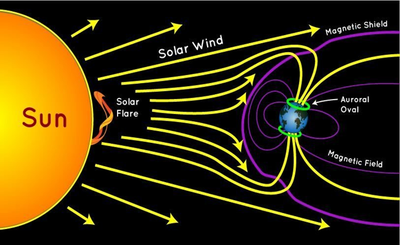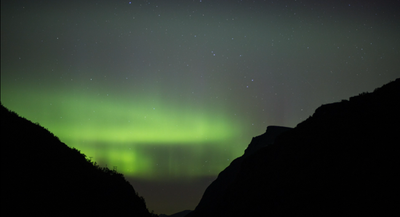Our love/hate relationship with the sun
We live on a planet that circles a star: the sun. We have a love/hate relationship with our sun. It’s radiation warms the earth and provides light. Without it, there would be no life on earth. But the sun also emits dangerous radiation and streams of energetic charged particles, the ‘solar wind’. If all of it would arrive at the earth’s surface, it would kill all life in a matter of days.
Fortunately, the earth has an atmosphere that attenuates the dangerous extreme-ultraviolet and X-rays coming from the sun. Also, the magnetic field of the earth acts as a shield that deflects the solar wind and protects us. This can be seen in Figure 1.

Figure 1. The earth’s magnetic field protects us from the solar wind. (Credit: NASA)
The radiation and particle emissions of the sun are not constant. They are variable, and this is often compared to the variable weather, but in space. This is why it is often called ‘Space Weather’.
There can be very intense episodes of Space Weather. During ‘solar storms’, charged particles can enter the atmosphere via the North and South pole, the weak spots in our magnetic field defence. Their energy lights up atmospheric gases, which leads to spectacular Aurora displays in the polar regions, as shown in Figure 2.

Figure 2. Northern Lights (Aurora Borealis) can be seen when solar storms hit the earth.
Click here to start a timelapse video (Credit: MixKit).
For questions, please contact outreach@pithia-nrf.eu
